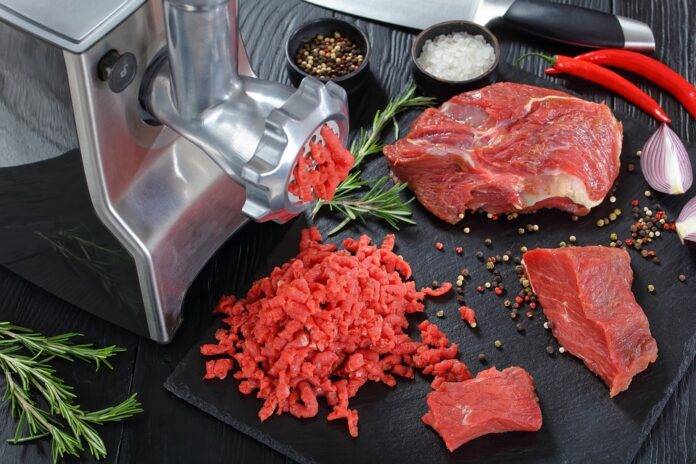Introduction
Meat transport and cold storage logistics play a crucial role in ensuring the quality and safety of meat products from farm to table. In this report, we will explore the top 10 challenges faced in meat transport and cold storage logistics, including specific data, financials, volumes, and examples where applicable.
1. Temperature Control
One of the biggest challenges in meat transport and cold storage logistics is maintaining the right temperature throughout the supply chain. Meat products are highly perishable and can spoil quickly if exposed to temperature fluctuations. This requires advanced refrigeration systems and monitoring tools to ensure that the meat stays fresh and safe for consumption.
Financial Impact:
According to a report by Market Research Future, the global cold chain market for meat products is expected to reach $234.5 billion by 2025.
2. Food Safety Regulations
Another challenge in meat transport and cold storage logistics is complying with strict food safety regulations. Governments around the world have stringent guidelines for handling and storing meat products to prevent contamination and ensure consumer safety. This includes proper labeling, packaging, and storage practices to maintain quality and prevent foodborne illnesses.
Example:
In 2018, a salmonella outbreak linked to contaminated beef products resulted in a recall of over 12 million pounds of beef across the United States.
3. Packaging and Handling
Proper packaging and handling are essential in meat transport and cold storage logistics to prevent damage and contamination. Meat products need to be packaged securely to avoid leaks and spills during transit, while also being handled with care to maintain quality and freshness.
Data:
According to the Food and Agriculture Organization (FAO), improper handling and packaging of meat products result in significant losses each year, with up to 30% of meat products being wasted due to poor packaging and handling practices.
4. Traceability and Transparency
Traceability and transparency in the meat supply chain are crucial for ensuring quality, safety, and accountability. Consumers are increasingly concerned about where their meat products come from and how they are handled, leading to a growing demand for traceable and transparent supply chains.
Financials:
A survey by Label Insight found that 94% of consumers are more likely to be loyal to a brand that offers complete transparency, including information on where meat products are sourced and how they are processed.
5. Transportation Efficiency
Efficient transportation is essential in meat transport and cold storage logistics to minimize delays and ensure timely delivery. This includes optimizing routes, scheduling, and vehicle maintenance to reduce costs and improve overall efficiency in the supply chain.
Volume:
According to the American Trucking Associations, the transportation of meat products accounts for over 15% of total freight volumes in the United States, highlighting the importance of efficient transportation in the meat industry.
6. Inventory Management
Effective inventory management is critical in meat transport and cold storage logistics to prevent stockouts and minimize waste. This includes accurate forecasting, monitoring, and replenishment strategies to ensure that the right amount of meat products is available at all times.
Example:
A study by the International Food and Agribusiness Management Association found that improving inventory management practices can reduce meat spoilage rates by up to 20% and increase overall profitability in the meat industry.
7. Supply Chain Visibility
Visibility across the supply chain is essential in meat transport and cold storage logistics to track the movement of products and identify potential bottlenecks or issues. This requires real-time monitoring and data analytics to optimize processes and improve overall supply chain performance.
Data:
Research by McKinsey & Company found that companies with high levels of supply chain visibility experience a 20% reduction in operational costs and a 10% increase in revenue due to improved efficiency and decision-making.
8. Sustainability Practices
Sustainability practices are becoming increasingly important in meat transport and cold storage logistics to reduce environmental impact and meet consumer demand for ethically sourced products. This includes implementing green initiatives, such as energy-efficient refrigeration systems and recyclable packaging, to minimize waste and carbon footprint.
Financial Impact:
A study by the World Economic Forum estimated that implementing sustainable practices in the meat industry could result in annual savings of $270 billion globally by 2030, highlighting the potential financial benefits of sustainability initiatives.
9. Labor Shortages
Labor shortages are a major challenge in meat transport and cold storage logistics, with an aging workforce and declining interest in the industry leading to difficulties in finding skilled workers. This can result in delays, errors, and increased costs due to inefficiencies in the supply chain.
Example:
A report by the Bureau of Labor Statistics found that the meat processing industry has a turnover rate of over 70%, with many workers leaving due to low wages, difficult working conditions, and lack of career advancement opportunities.
10. Technology Integration
Integrating technology solutions is essential in meat transport and cold storage logistics to streamline processes, improve visibility, and enhance overall efficiency. This includes implementing IoT devices, blockchain technology, and data analytics tools to track products, monitor conditions, and optimize operations in real-time.
Volume:
According to a report by Research and Markets, the global market for cold chain technology in the meat industry is projected to reach $7.8 billion by 2023, driven by the increasing adoption of advanced technologies to improve supply chain management.




